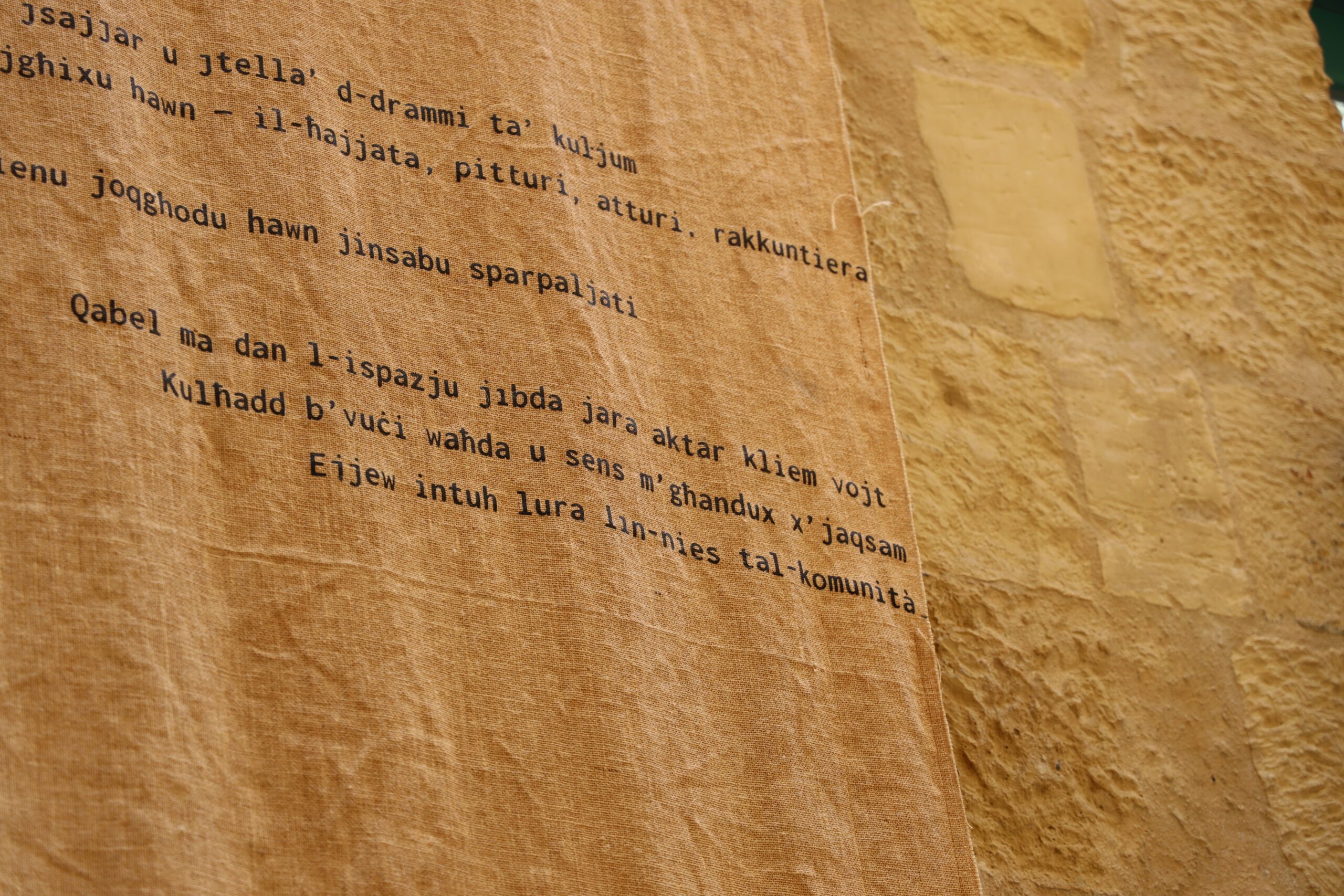A multimedia performance piece created alongside former residents of the Biċċerija, Paġġatur explores the liminal links between identity, the public and the personal, domesticity and a closely knit community through the dynamic nature of the physical space.
“We’ve created a text based on the stories told to us by people who lived in the Biċċerija building. It’s our interpretation of their life and of the history and changes that have happened in this building and we’ve also created a performance – a movement-based performance – to accompany this text,” the team explains.
The poġġaturi or paġġaturi (external aisles running along the sides), were more than just vibrant places where exchanges and village gossip took place. The paġġaturi were ideal for the washing of clothes with children taking opportunity to take shelter underneath bed sheets which were hung from one side to another. The recent stories of the Biċċerija are associated with characters and families well-known by their nicknames until this day.
The Biċċerija is after all a prime example of interwoven relationships and resource-sharing; a hub which conveyed the complexities and intrincities of the true meaning of community.
This intervention reflects one of the nine curatorial thematics of fuse, Familiarity. An isolated and sheltered structure, the physical fabric of the Biċċerija building is synonymous for being almost self-sufficient in nature. With the lower floor of the Old Abattoir building dedicated to commercial purposes, the majority of which were bakers of bread, confections and home-cooked meals, the upper floors were kerrejja, housing multiple families. From generation to generation, families who inhabited the Biċċerija building were well-known by their nicknames, most of them until this very day. The poġġaturi were spaces extending beyond the kerrejja of the Old Abattoir and synonymous with the washing of clothes and the gossiping of housewives. The numerous children of the area, aside from playing in the street, attended the Azzjoni Kattolika at Palazzo Carraffa; a place synonymous with well-known local scriptwriters who once lived in Valletta.
Curated by Elyse Tonna, fuse is a collaborative visual arts and research project which explores and uncovers aspects of the intangible history and the intangible stories of the area.
